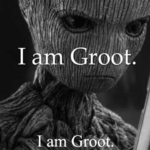Here’s another post from Bullwinkle’s Corner, an occasional series about poems that speak to me in some way. See the sidebar for the others.
Today’s entry is a song, which of course is a type of poem. And it’s a powerful one, about a real historical event: the Puerto Montt Massacre, in which police fired shots and tear gas into a crowd of protester/squatters, killing nine people. The singer-songwriter is Chilean folk singer Victor Jara (1932-1973), a Chilean folk singer, teacher, and political activist who was murdered in the early days of the U.S.-backed dictatorship of Augusto Pinochet.
Of course, music is meant to be listened to, so here is an audio recording of Jara performing the song live in Valparaiso, Chile. After an introduction and some silence, the song starts at 0:34. The song is in Spanish, but if you don’t speak Spanish, a translation is below.
Two things are helpful to know in interpreting the lyrics. First, Puerto Montt i is like Seattle in that it is a temperate city on the Pacific coast with a cold polar current offshore – so it rains a lot. The Chilean expression equivalent to “Is the Pope Catholic?” is “¿Lluvia en Puerto Montt?” (Is it raining in Puerto Montt?).
Second, who is the “port monkey” in the chorus? It’s Interior Secretary Edmundo Pérez Zujovic, who gave the order to evict the settlers. (He probably didn’t order the police to shoot, but you can imagine his attitude towards the settlers might have contributed to the violence.)
[youtube https://www.youtube.com/watch?v=lqjfOxKFnB0&w=560&h=315]
Preguntas por Puerto Montt
Victor Jara
Muy bien, voy a preguntar
Por ti, por ti, por aquel
Por ti que quedaste solo
Y el que murió sin saber.
Muy bien, voy a preguntar
Por ti, por ti, por aquel
Por ti que quedaste solo
Y el que murió sin saber
Y el que murió sin saber
Murió sin saber por qué
Le acribillaban el pecho
Luchando por el derecho
De un suelo para vivir
Hay que ser mas infeliz
El que mando disparar
Sabiendo cómo evitar
Una matanza de vil
Puerto mono, Puerto Montt
Puerto mono, Puerto Montt
Puerto mono, Puerto Montt
Puerto mono, Puerto Montt
Usted debe responder
Señor Pérez Zujovic
Por qué al pueblo indefenso
Contestaron con fusil?
Señor Pérez su conciencia
La enterró en un ataúd
Y no limpiarán sus manos
Ni toda la lluvia del sur
Ni toda la lluvia del sur
Murió sin saber por qué
Le acribillaban el pecho
Luchando por el derecho
De un suelo para vivir
Hay que ser mas infeliz
El que mando disparar
Sabiendo cómo evitar
Una matanza de vil
Puerto mono, Puerto Montt
Puerto mono, Puerto Montt
Puerto mono, Puerto Montt
Puerto mono, Puerto Montt
Questions for Puerto Montt
Victor Jara
Very well, I will ask,
for you, for you, for him,
for you who stayed there alone,
for you who died without knowing.
Very well, I will ask,
for you, for you, for him,
for you who stayed there alone,
for you who died without knowing.
For you who died without knowing.
Died without knowing why
they shot him in the chest
for fighting for the right
of soil on which to live.
Oh, who could be more unhappy
than the man who shot them,
knowing how to avoid
such an evil massacre?
Port monkey, Puerto Montt!
Port monkey, Puerto Montt!
Port monkey, Puerto Montt!
Port monkey, Puerto Montt!
You must answer,
Mr. Pérez-Zujovic,
Why the defenseless people
were answered with the rifle?
Mr. Pérez-Zujovic, your conscience
is buried in a coffin,
and your hands will never be clean,
not even with all the southern rains.
Not even with all the southern rains.
Died without knowing why
they shot him in the chest
for fighting for the right
of soil on which to live.
Oh, who could be more unhappy
than the man who shot them,
knowing how to avoid
such an evil massacare?
Port monkey, Puerto Montt!
Port monkey, Puerto Montt!
Port monkey, Puerto Montt!
Port monkey, Puerto Montt!
Such a raw evocation of a tragedy – so angry yet so sensitive.









